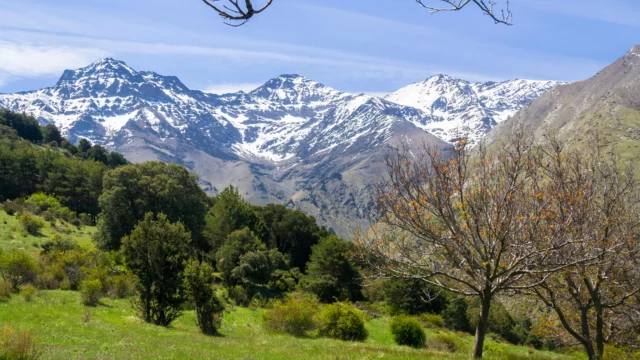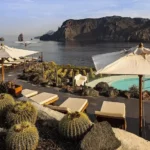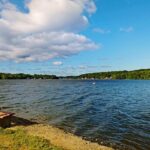The snow-covered Sierra Nevada mountains are Spain’s tallest. They reach heights of more than 3,000 metres.
This large mountain range in Andalusia is 90 kilometres long and is protected as a national park and a UNESCO Biosphere Reserve.
Visitors love the beautiful alpine scenery and the peaceful atmosphere, which has a lot of lush plants and freshwater streams.
From November until June, snow covers the Sierra Nevada mountains. The Pradollano ski resort is only 45 minutes from Granada and has great wide-open slopes for going downhill. As the most southern place in Europe for winter sports, the Sierra Nevada has mild weather and a lot of sunny days with clear blue skies.
Las Alpujarras is a beautiful place with wooded hills, green valleys, olive groves, and typical white villages. It is at the base of the Sierra Nevada mountains (Moorish whitewashed villages).
These towns are known for their quiet pedestrian streets, flower-covered homes, and small historic churches that were once mosques but were turned into churches. There are hiking trails in the mountains around the villages.
We’ve put together a list of the best places to visit in Spain’s Sierra Nevada to help you plan your trip through this beautiful area.
12. The Route to Pico de Veleta
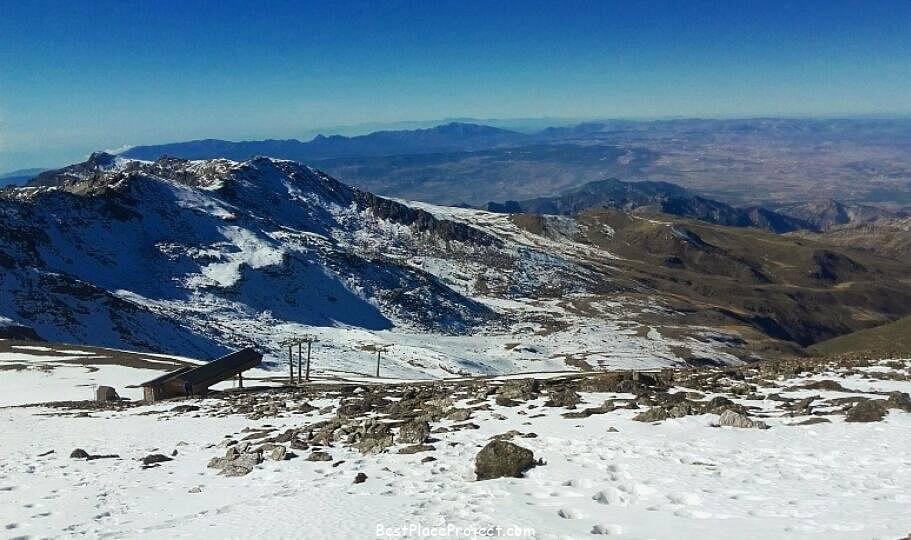
The Cerro de Mulhacén Mountain is 3,481 metres high, making it the highest peak in the Sierra Nevada range. The Pico de Veleta Mountain is 3,428 metres high, making it the second-highest peak in the Sierra Nevada range. The road to the Pico de Veleta is a magical journey through the beautiful Sierra Nevada mountains.
At Vega de Granada, the trip starts at an elevation of 640 metres and keeps going up until it reaches 3,392 metres, which is almost the top of Pico de Veleta. This makes it one of the highest mountain roads in Europe. The route is on a paved road, and you can take a bus or a car to get there.
This 35-kilometer trip is best started early in the morning so you don’t have to drive in the sun. The stark difference between the lush southern landscape of the Vega de Granada and the snow-covered Sierra Nevada peaks is one of the most interesting things about the route. At the top, you should wear warm clothes because it’s windy and cold.
11.The Moorish Charm of Capileira
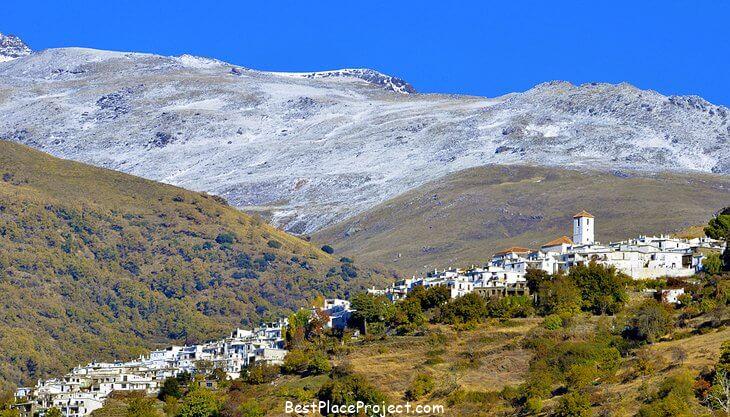
In the wild, mountainous area of Las Alpujarras, the village of Capileira stands at 1,436 metres, just 37 kilometres from the Pico de Veleta. From the Pico de Veleta Mountain, you can get here by taking the narrow road that winds around the top and then down through hairpin turns to the village.
Capileira is the highest and most remote of the three whitewashed villages in the Poqueira Gorge, an area with beautiful, rough scenery. The village is built into the side of a hill. The streets are narrow and windy, and there are many freshwater springs running through the town. From almost anywhere in the village, you get a great view.
In the beginning of the 16th century, Christians took over the village from the Moors. The Catholic Monarchs created the Iglesia de Nuestra Señora de la Cabeza (Iglesia Parroquial de Santa María la Mayor) on the site of a former mosque. The current church, which is in the Mudéjar style, was fixed up in the 18th century.
On Calle Mentidero, the Museo Pedro Antonio de Alarcón has a collection of local crafts and clothes, as well as an exhibit about the Spanish author Alarcón, who lived in the 19th century.
The village of Capileira is a good place to stay for nature walks and hikes in the gorge and up to the Sierra Nevada mountains.
The three-star Finca Los Llanos is a great place to stay in Capileira. It has a beautiful view, an outdoor pool, and a terrace that is shaded by trees. The hotel’s rustic Andalusian architecture is made up of traditional Moorish elements like decorative ceramics and wood accents. There is a restaurant in the hotel that serves traditional food with a modern twist.
10. Pampaneira: A Whitewashed Alpujarras Village
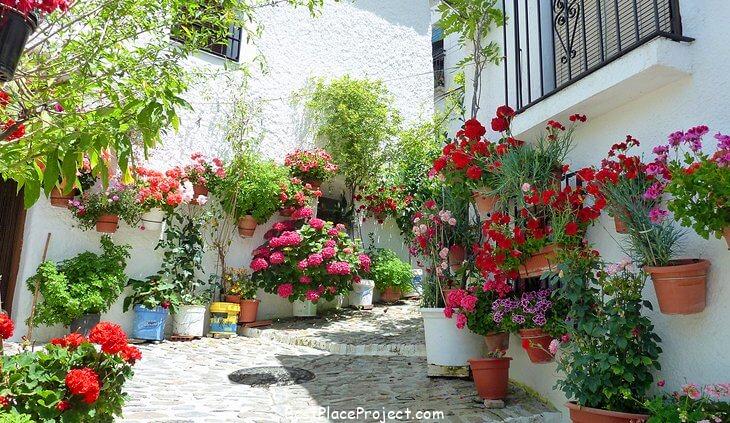
Pampaneira is a whitewashed Moorish village in Las Alpujarras that has a lot of history and culture. Visitors are enchanted by the village’s old-world feel, with its narrow cobblestone streets and alleyways, quiet squares, and traditional houses.
The small village of about 300 people is on the steep slopes of the Barranco de Poqueira (Poqueira Gorge), a beautiful river gorge. Bubión and Capileira, two other whitewashed villages, are also nearby. At 1,000 metres, Pampaneira is the lowest of the three villages. It is in the foothills.
In the middle of the village is a beautiful square with a Mudéjar church from the 16th century. The Iglesia de Santa Cruz has a wood-paneled ceiling and a gilded altarpiece from the 17th and 18th centuries.
The town square has a few cafes, restaurants, and shops that sell traditional arts and crafts. Abuela Ili, a small chocolate factory and shop, is a highlight for many tourists.
The O Sel Ling Buddhist monastery is in the peaceful area around Pampaneira. The monastery is in a remote area because Buddhists believe that meditation and solitude are important.
9. Picturesque Mountain Scenery in Bérchules

This beautiful village sits on a hilltop 1,320 metres above sea level in the Alpujarras region and looks out over the dramatic gorge of the Guadalfeo River (a good place for trout fishing). The Sierra Nevada mountains make a beautiful background.
The name of the village comes from the Arabic word “vergel,” which means “pasture.” Goats, sheep, and cattle still graze on the lush green pastures in the area. As the animals move around, cow bells can be heard, and the sound of little birds chirping is also common.
There are also cherry, apple, and peach orchards, fields with tomatoes, strawberries, and raspberries, and old chestnut trees in the countryside.
Outdoor activities like hiking, biking, and horseback riding bring a lot of people to Bérchules.
Take the path lined with mulberry trees that leads to an old Moorish arch for a nice walk with nice views. On sunny days, a lot of people like to picnic here.
The two-star Hotel Los Bérchules is a great place to stay if you want to spend your vacation outdoors. It has cosy rooms with great views of the countryside.
This rustic Andalusian lodge has an outdoor pool and a restaurant that serves traditional food from the Alpujarras region. Every room has a balcony where guests can look out at the beautiful views.
8. The Bohemian Village of Órgiva

rgiva is 20 kilometres from Capileira and is the biggest town in Las Alpujarras. It is in the fertile valley of the Guadalfeo River.
People come here for the beautiful mountain views, quiet atmosphere, and mild weather. Around rgiva, the countryside is full of olive groves and orange and lemon orchards.
The Iglesia de Nuestra Seora de la Expectación is an impressive Baroque church from the 16th century that stands out in the village. A sculpture of Christ in the church is thought to be the work of the famous artist Juan Martnez Montaés.
The Palacio de los Condes de Sástago (Palace of the Counts of Sástago), which was the home of the Great Captain Don Gonzalo Fernández of Córdoba in the 16th century, is another interesting place to visit.
rgiva is better known these days for its artsy, bohemian vibe. There are many cosy cafés on the main street near the church. Tourists will also like the range of hotels and other places to stay in the town.
The Casa Jazmn is a highly rated boutique hotel with a beautiful view of the mountains, a lovely garden, and an outdoor pool. The hotel only has four guest rooms, and each one is decorated in a charming Andalusian style in a different way.
7. Camino Real de las Hoyas Nature Trail
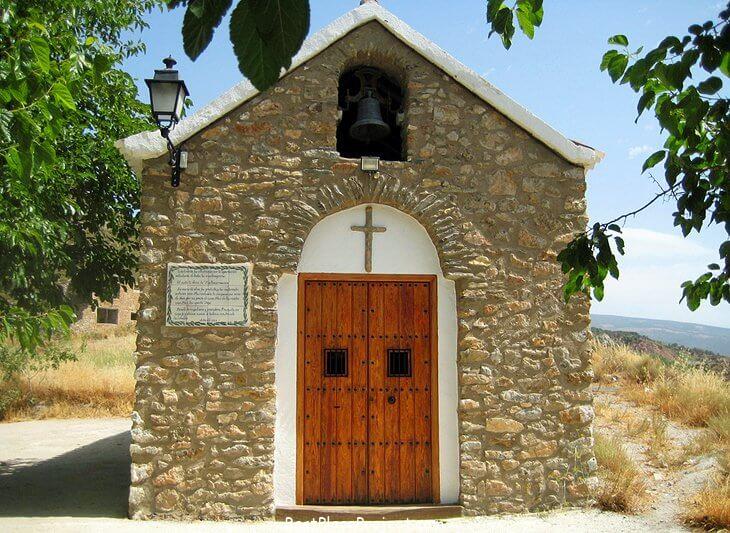
The tiny villages of Yegen and Mecina Bombarón are right next to each other. They are surrounded by beautiful countryside that is great for hiking and exploring nature. Yegen and Mecina Bombarón are typical of the villages in Las Alpujarras because they have whitewashed Moorish-style houses grouped around old churches.
The old mosque that was turned into the Iglesia del Dulce Nombre del Nio Jess in Yegen is now a church in the Mudéjar style. The interior is known for being simple and calm.
Iglesia Parroquial de San Miguel Arcángel was built in the 18th century to replace a church that the Moors had destroyed in the 16th century. As is common in Andalusia, this church’s design features, such as the Arabic tile work, are influenced by Islam.
The Camino Real de las Hoyas (Royal Road of the Hoyas) connects the two villages. It is a path lined with old oak trees. Along this five-kilometer trail, hikers will see an old bridge that connected Almera and Granada. The bridge is thought to have been built by the Romans, and it is now under a modern transit bridge, making for a stunning contrast in architectural styles.
The Camino Real de las Hoyas goes through the Sierra Nevada, which has a lot of different plants and animals like mountain goats and wild boars.
In Mecina Bombarón and the nearby town of Montenegro, there are a few small chapels that belong to hermitages. These small chapels have shrines to holy people and are important places where people go on pilgrimages.
6. Lanjarón: A Famous Spa Town
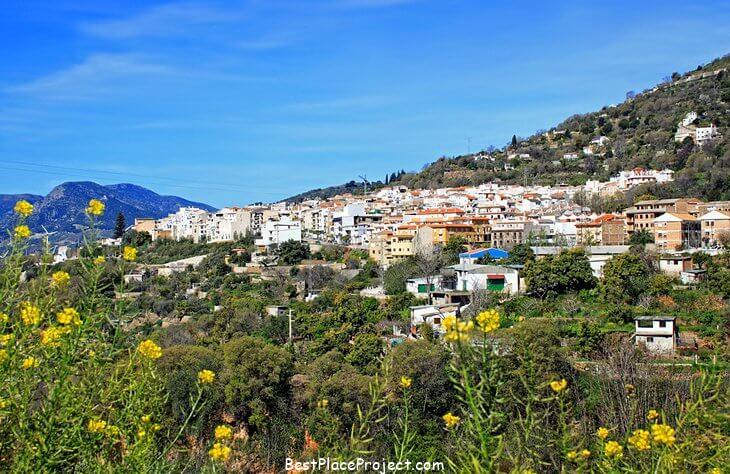
Lanjarón, on the western edge of the Alpujarras region, is the place to go for fresh mountain air and beautiful views. The land around Lanjarón is rough, and the hillsides are covered with wildflowers.
The town is known for its natural spring, and the high-quality mineral water that comes from it is sold all over Spain. The thermal baths in Lanjarón are also known for how well they heal, and people have been coming to the town’s spa for hundreds of years.
The Balneario de Lanjarón opened in 1760 and has spa treatments, thermal baths, and pools with healing mineral water. This prestigious place to stay has four-star rooms in a modern style, a concierge, a fitness centre, a tennis court, and a restaurant that serves healthy organic Mediterranean food.
The town is well set up for tourists. There are many hotels and restaurants to choose from. On a rocky outcrop above the village are the ruins of a Moorish castle. This is where King Fernando’s Christian army beat the Moors.
5. The Mountain Village of Trevélez
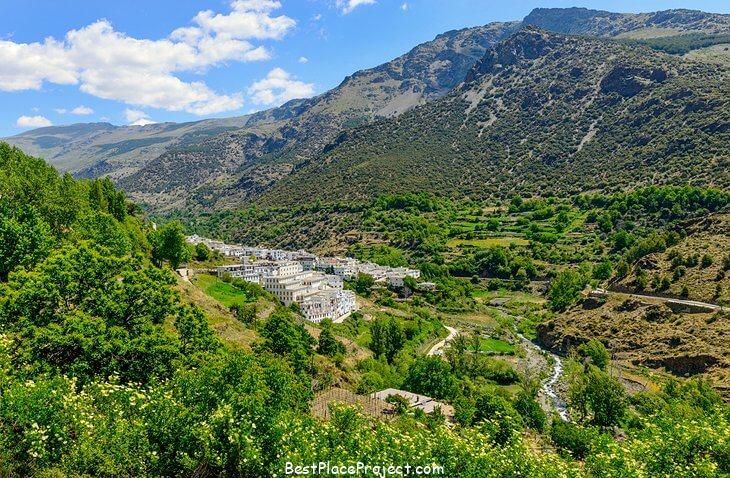
At 1,476 metres, the village of Trevélez is the highest in Spain. It is in a beautiful river valley. About 800 people live in this small mountain village, which has three neighbourhoods: bajo (low), medio (middle), and alto (high) (high).
Tourists are most interested in the Barrio Bajo (Lower District) area of Trevélez. There are many artisan shops, restaurants, and hotels in this busy neighbourhood.
Trevélez is a great place to stay if you want to explore the Sierra Nevada National Park. There are 15 mountain peaks in this national park that are higher than 3,000 metres.
The Mulhacén mountain peak is the highest (3,482 meters). At the Sierra Nevada National Park, people can hike, mountain bike, ski, climb mountains, and do other outdoor activities.
4. Country Village of Bubión
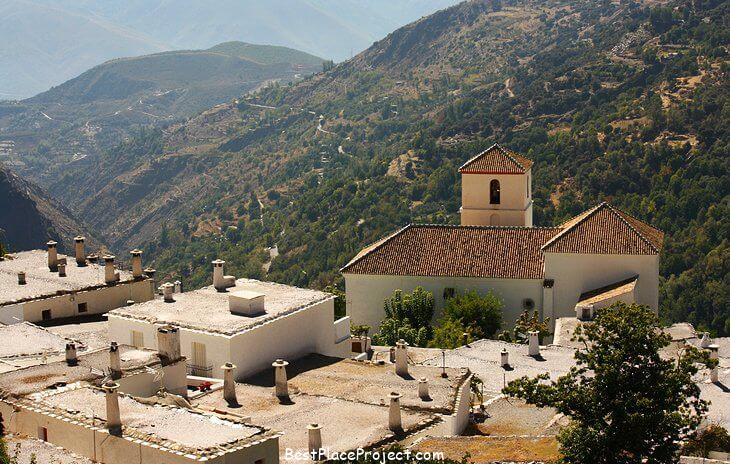
This quiet village is in the Poqueira Gorge, halfway between Capileira and Pampaneira. The Alpujarras foothills and the snow-capped Sierra Nevada mountain peaks surround the small village of whitewashed homes. Everywhere you look, you’ll see beautiful sights.
In the village, there are a number of shops where people sell their handmade goods. There is also an ethnography museum called Casa Alpujarrea, which shows a traditional Alpujarran peasant’s house with its original furniture.
Bubión is a great place to start for long walks, hikes, and horseback riding trips through nature.
3. Pradollano Ski Resort
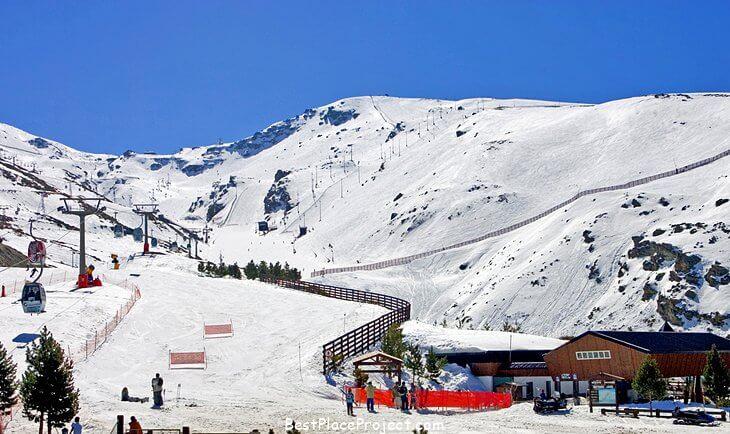
Pradollano, which used to be called Sol y Nieve (which means “Sun and Snow”), is a winter sports resort with great powder snow and sunny days. This ski resort is proud of how much sun it gets every year and the fact that it is the most southern ski resort in Europe, where the weather is usually mild.
There are a lot of chairlifts and gondolas at the Pradollano ski resort, which is between 2,100 and 3,282 metres high. Most of the ski terrain at the resort is good for beginners and intermediate skiers. From late November or December to April or May is ski season.
There are all kinds of places for tourists to stay in the area, from high-end resorts to simple hotels, chalets, and mountain huts. The ski resort of Pradollano is about 38 kilometres from the city of Granada.
2. Tajos Altos
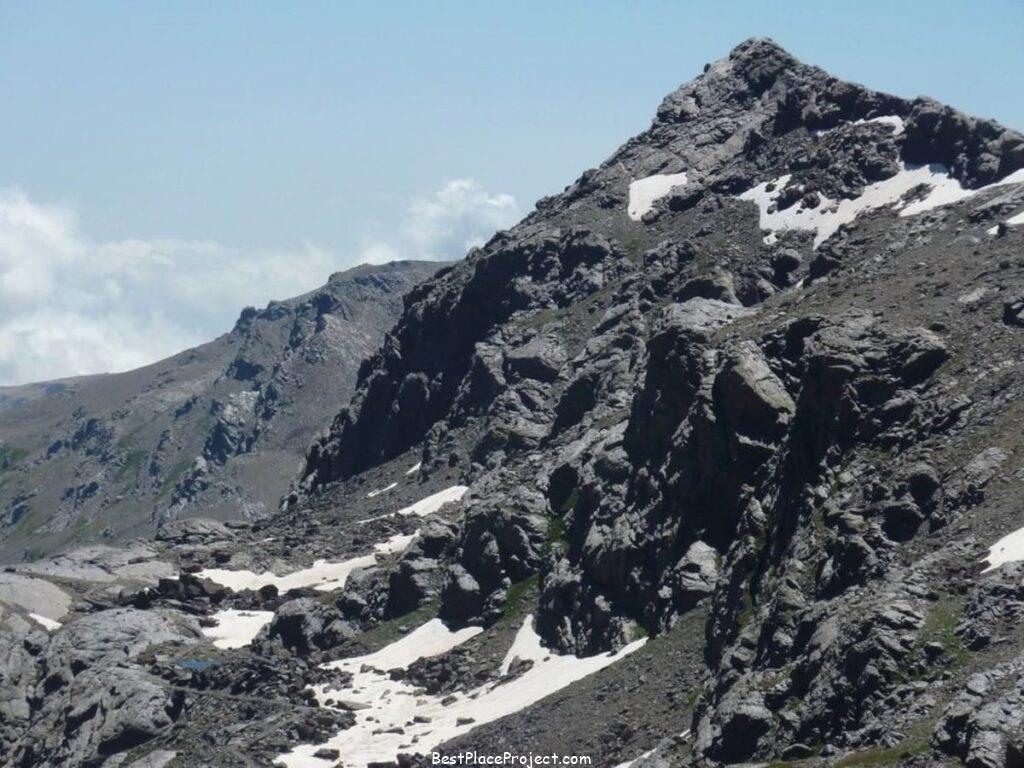
From the west of the Sierras and the Vega of Granada Tajos Altos is just a small lump on a long, seemingly flat ridge. From the north and south it is prominent, but often mistaken for Veleta, the Pico del Cartujo or some other more well known peak. But it is in fact a superb mountain in it’s own right.
Depending on which map you use Tajos Altos can be difficult to identify. Sometimes it is just a series of high points on the long ridge running from Pico del Cartujo to the Cerro de Caballo. Sometimes it is marked as a particular point, incorrectly in my opinion!
The Tajos Altos I know and love is the prominent “mountain” looking mountain (if you understand what I mean?). From the north and south it is a pyramid. A classic mountain shape. The sort kids draw at school.
1. Alcazaba (Sierra Nevada)
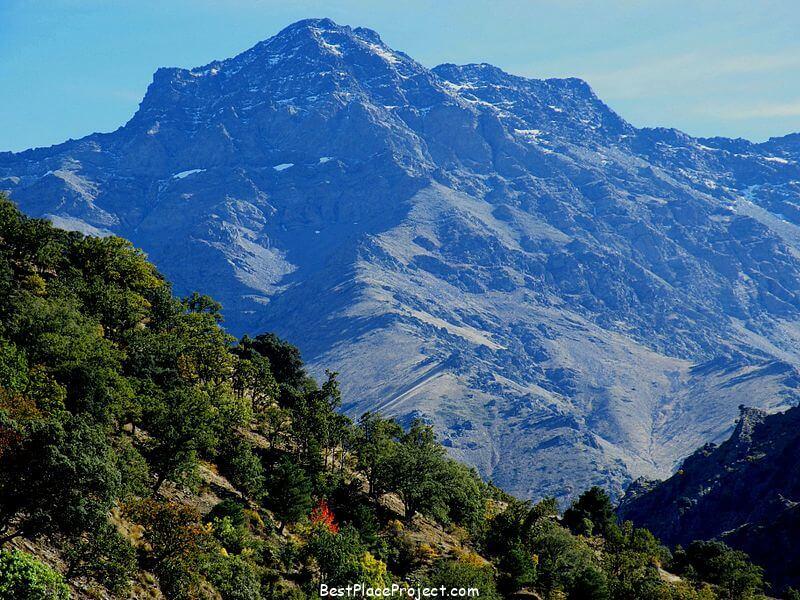
Spain has a mountain called Alcazaba. At 3,371 metres, it is the third highest mountain in the Sierra Nevada range and the fifth highest on the Iberian Peninsula.
From the town of Granada, you can see the beautiful north face. The word “fortification” in Arabic is where the name “Alcazaba” comes from.
The north face of Alcazaba is very steep and goes straight down about 1000 m. In the middle of the face, there are two paths that go from west to east. People may have used these paths to get water.
At the Prado de la Mina, you can find small rivers. Three lakes called Lagunas de la Calderetas are on the east side.
On the south side of the mountain, there are two peaks on the wide top. Between Mulhacen and Alcazaba are the Siete Lagunas, also called the Seven Lakes.
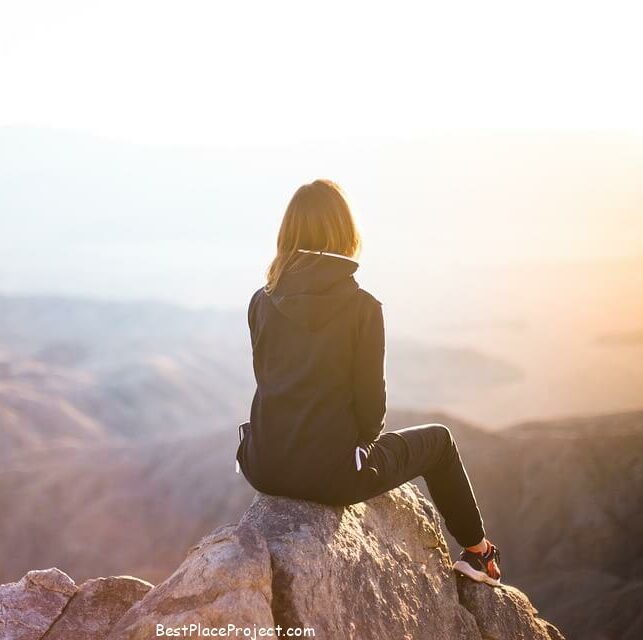
I love traveling and exploring new places and this website is all about listing all best places in the world that you can go and explore.
